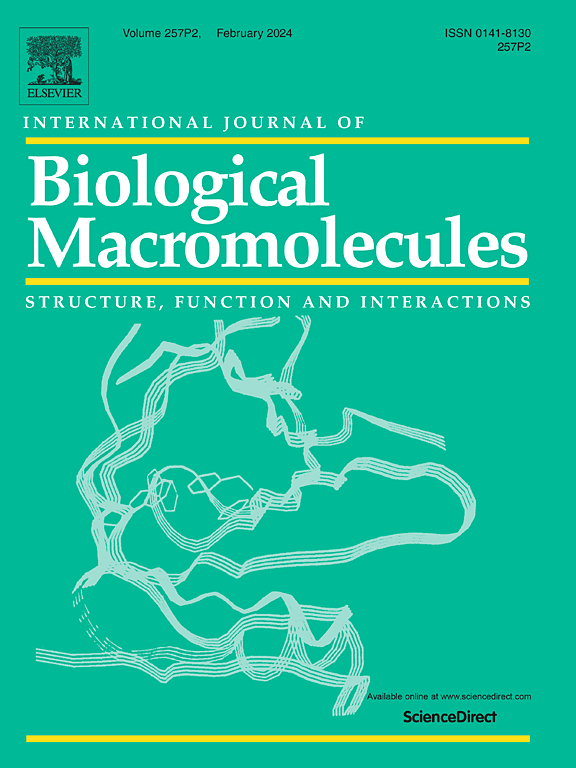纤维素纳米晶辅助微相分离制备多尺度电纺丝膜用于水乳分离
IF 8.5
1区 化学
Q1 BIOCHEMISTRY & MOLECULAR BIOLOGY
International Journal of Biological Macromolecules
Pub Date : 2025-08-24
DOI:10.1016/j.ijbiomac.2025.147045
引用次数: 0
摘要
高效分离油包水(W/O)乳液对于废水处理至关重要,但传统的静电纺丝膜往往存在力学性能差、纤维间孔大和结构不稳定的问题。在这里,我们提出了一种同轴静电纺丝策略,将PVDF/CNC芯与PDMS壳相结合,以构建分层超疏水膜。在静电纺丝过程中,CNC的加入诱导了非溶剂驱动的微相分离,产生了主轴和纳米球状的表面结构,同时增强了纤维网络。同时,PDMS外壳有助于纤维间的连通性和增强表面疏水性。这些协同效应形成了一个互锁的多孔结构,支持重力驱动的水乳状液分离。在4 wt%的CNC下,膜的水接触角为158°,平均孔径为1.93 μm,通量为2890 L m−2 h−1,同时在20个循环中保持94%以上的分离效率。这项工作提供了一种可持续的策略来定制有效的水/油乳液分离结构。本文章由计算机程序翻译,如有差异,请以英文原文为准。
Cellulose nanocrystal-assisted microphase separation for constructing multi-scale electrospun membrane toward W/O emulsion separation
Efficient separation of water-in-oil (W/O) emulsions is essential for wastewater treatment, yet conventional electrospun membranes often suffer from poor mechanical properties, large inter-fiber pores and structural instability. Here, we propose a coaxial electrospinning strategy that combines a PVDF/CNC core with a PDMS shell to construct a hierarchical superhydrophobic membrane. The incorporation of CNC induces nonsolvent-driven microphase separation during electrospinning, generating spindle- and nanosphere-like surface structures while reinforcing the fibrous network. Meanwhile, the PDMS shell contributes to inter-fiber connectivity and enhances surface hydrophobicity. These synergistic effects result in an interlocked porous architecture that supports gravity-driven separation of W/O emulsions. At 4 wt% CNC, the membrane achieves a water contact angle of 158°, an average pore size of 1.93 μm and a flux of 2890 L m−2 h−1, while maintaining over 94 % separation efficiency over 20 cycles. This work provides a sustainable strategy for tailoring structures for effective W/O emulsion separation.
求助全文
通过发布文献求助,成功后即可免费获取论文全文。
去求助
来源期刊
CiteScore
13.70
自引率
9.80%
发文量
2728
审稿时长
64 days
期刊介绍:
The International Journal of Biological Macromolecules is a well-established international journal dedicated to research on the chemical and biological aspects of natural macromolecules. Focusing on proteins, macromolecular carbohydrates, glycoproteins, proteoglycans, lignins, biological poly-acids, and nucleic acids, the journal presents the latest findings in molecular structure, properties, biological activities, interactions, modifications, and functional properties. Papers must offer new and novel insights, encompassing related model systems, structural conformational studies, theoretical developments, and analytical techniques. Each paper is required to primarily focus on at least one named biological macromolecule, reflected in the title, abstract, and text.

 求助内容:
求助内容: 应助结果提醒方式:
应助结果提醒方式:


